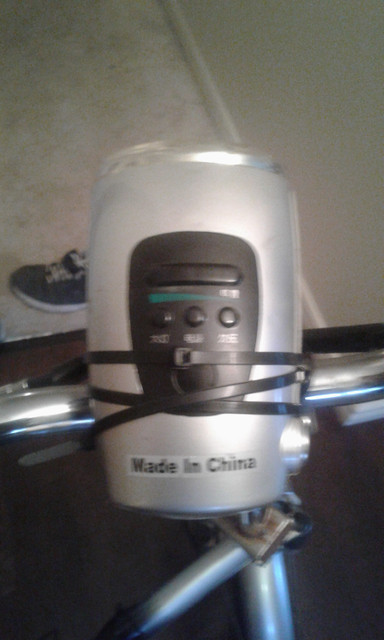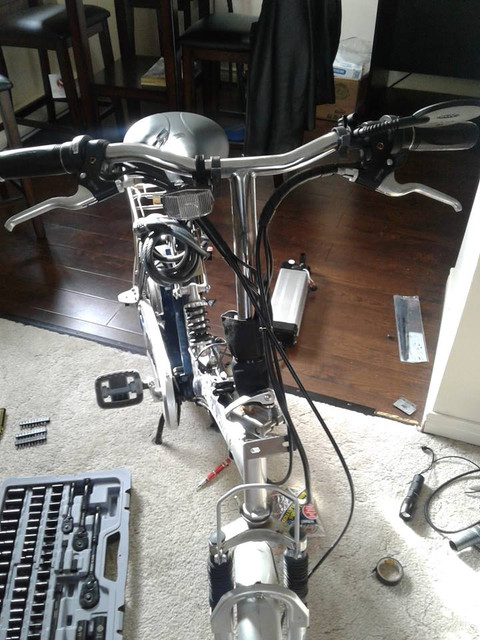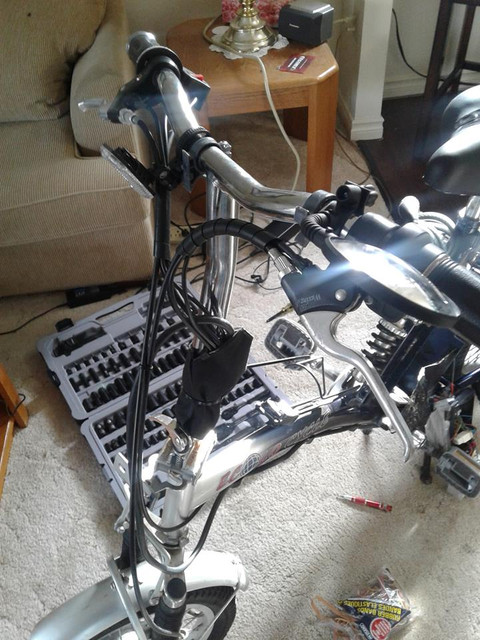drawk
10 mW
The background: I recently had my Emmo bicycle style ebike stolen. Thankfully, the battery was upstairs charging. Being with a 36v 11aH silverfish style battery and no bike, I was looking into converting a mountain bike, but came into contact with a gentleman who had a bike but no battery, and $50 later, came home with the bike pictured in the attachments. I can't quite identify the model, I imagine it is discontinued as I don't see it on any of the Ecolocycle dealers inventory. With a bit of modification to the leads, got it up and running - it has pedal assist in addition to the throttle and I am getting between 20km-25km/hr.
I was hoping that someone might have some information on the Ecolocycle controllers. I've searched, but I can find none. What I am trying to determine is if I can run this up to 48v. A couple of things: the Ecolocycle pages use language such as "25km/hr as limited by controller." and sure enough, that seems to be exactly what I hit at the top-end. Does anyone know if there is, in fact, a controller based speed limit on these?
The controller is in a sealed black box. Hard to see, but took a pic of the exterior (not that there is much to see) on the frame behind where I have strapped the battery. I haven't looked too much to see if there is a way in, but it doesn't look like a simple task. If I do need to find a way to open it, I can presumably check the capacitors to get an idea, yes? Although, again, if anyone knows anything about these offhand, I'd appreciate any info.
Apologies for the blurriness of the pics.



I was hoping that someone might have some information on the Ecolocycle controllers. I've searched, but I can find none. What I am trying to determine is if I can run this up to 48v. A couple of things: the Ecolocycle pages use language such as "25km/hr as limited by controller." and sure enough, that seems to be exactly what I hit at the top-end. Does anyone know if there is, in fact, a controller based speed limit on these?
The controller is in a sealed black box. Hard to see, but took a pic of the exterior (not that there is much to see) on the frame behind where I have strapped the battery. I haven't looked too much to see if there is a way in, but it doesn't look like a simple task. If I do need to find a way to open it, I can presumably check the capacitors to get an idea, yes? Although, again, if anyone knows anything about these offhand, I'd appreciate any info.
Apologies for the blurriness of the pics.











